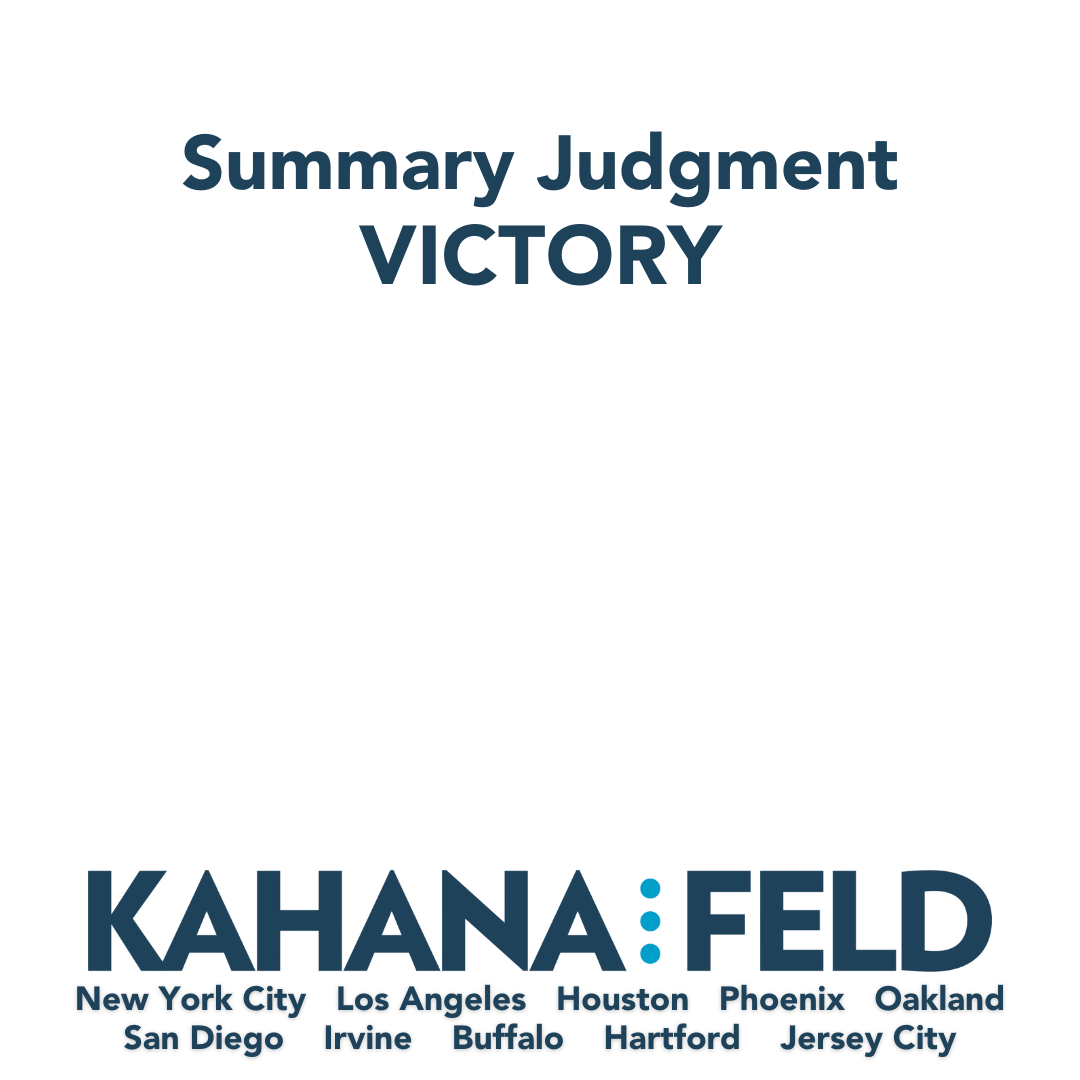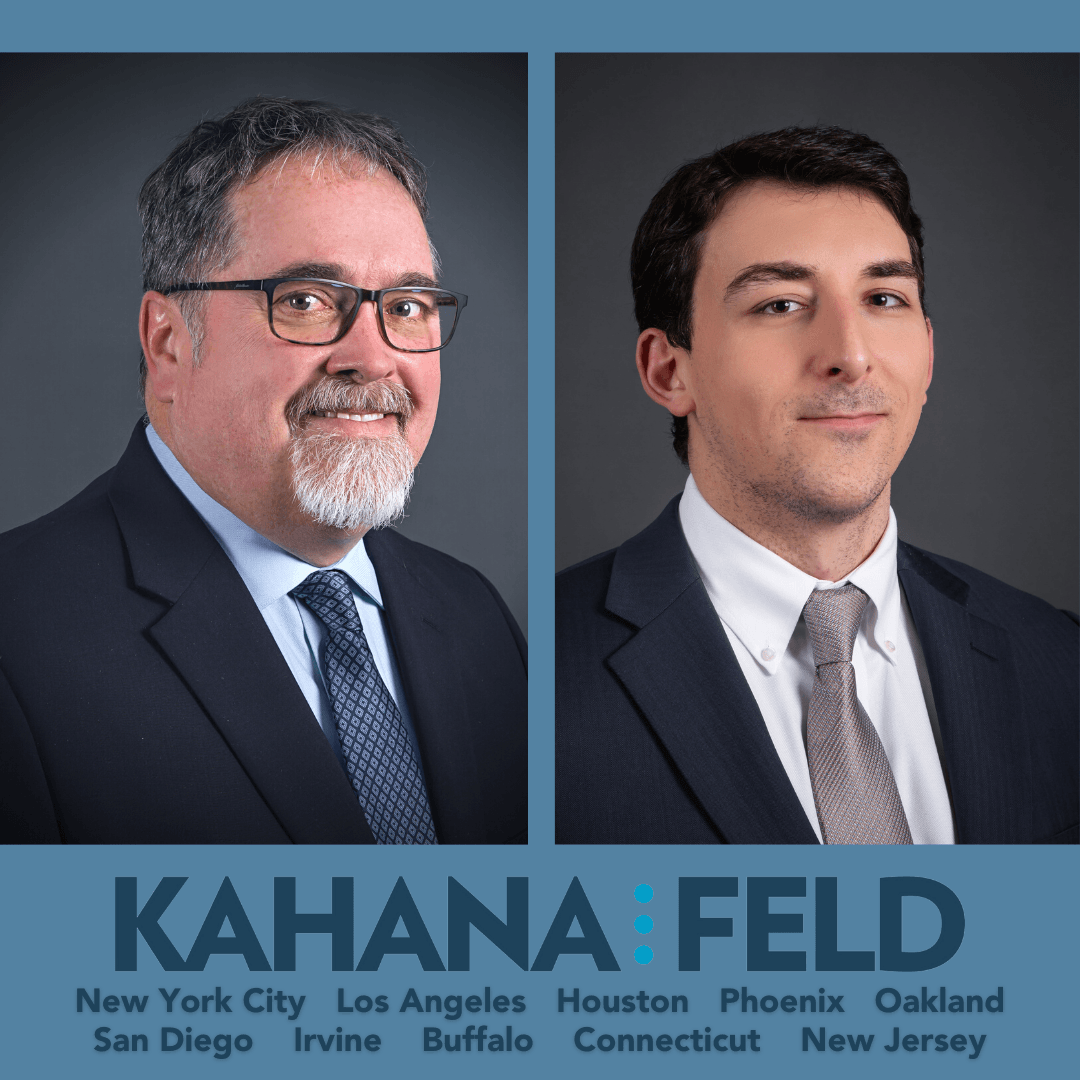I’m a diehard Mets fan, but in the words of the legendary Yankee Phil Rizzuto, “Holy Cow!”
I am absolutely thrilled to report a major appeal victory for our clients on a massive risk, and one that should especially resonate with our clients in the trucking and transportation industry. The New York Appellate Division yesterday affirmed our victory granting our trucking client summary judgment and dismissing the dozens of plaintiffs’ and co-defendants’ claims against it in this mass tort action. See Ren Yao, et al., v. World Wide Travel, Webster Trucking, et al., https://nycourts.gov/reporter/3dseries/2024/2024_01945.htm
(2d Dep’t, April 10, 2024).
This decision once again powerfully confirms the importance of: (1) summary judgment (“SJ”) as a core tool in every defendant’s arsenal, but especially in NY with its automatic statutory right of interlocutory appeal; and (2) the investment value derived from retaining serious (not ordinary or hack) experts and appellate counsel early during discovery, both to guide discovery and support and draft SJ. This appeal arose out of a nationally-reported tragedy involving a World Wide tour bus full of passengers returning from Foxwoods to Manhattan on I-95 in the wee morning hours. The bus impacted the guardrail at a shallow angle after a slight curve in the roadway, tipped over sideways, and continued sliding forward into a vertical metal signpost, splitting the bus up the middle and causing 15 deaths and numerous horrific catastrophic injuries to another 17 passengers. Following this paradigm of a sleeping driver accident, the bus driver offered the standard excuse under the circumstances: that he was “cut off”, in this case by a phantom tractor trailer that had roared up from behind and cut him off. We represented the tractor trailer driver who testified that his vehicle was actually well over a quarter of a mile behind the bus when it crashed.
Our adversaries – and even some former colleagues – were entirely dismissive of the entire SJ motion phase as a waste of time (a “billing opportunity”) because, in their view, this scenario presented a prototypical “he-said-versus-he-said” issue of fact. Our appellate group instead viewed this as an opportunity to challenge a lazy and presumptuous dynamic.
In addition to the negative (and litigation-perpetuating) view of SJ held by far too many in our industry, the additional hurdle we faced included the fact that the bus driver, Ophadell Williams, had already successfully raised the “cut off” defense (albeit under the more-forgiving criminal standard) in his high-profile criminal manslaughter trial in the Bronx that took place in the aftermath of SuperStorm Sandy.
Our DC Sean Burns brilliantly retained a top-flight accident reconstruction expert, Ashley Dunn, a bona fide expert who offers his opinions and tells the truth regardless of what the client wants to hear (which provides his clients an accurate understanding of the risk and renders him unimpeachable). We then proceeded to marshal our mountain of compelling evidence obtained by our excellent defense team (headed by Sean Burns at Kennedys and John Patton and Kelly Lynn Ferron at Patton & Ryan), including testimony from the many non-party drivers on I-95 that night, the NY State Police investigation, the NTSB factual findings, the black box data from the bus and our client’s tractor trailer, and the internally inconsistent and ever-morphing testimony of the bus driver on virtually every conceivable aspect of the accident (speed, braking, impact, reaction, direction, surrounding vehicles, truck details and description). Dr. Dunn’s supporting affidavit demonstrated that the accident – as described by the sleeping bus driver – was physically and mathematically impossible. In sum, our truck’s top speed in the minute and a half prior to the accident was lower than the bus’s average speed over the same minute and a half, therefore rendering it physically impossible for the tractor trailer to have overtaken and cut off the bus in that minute and a half period. If this were not enough, the black box data from the bus demonstrated that the driver did not decelerate or brake at any point (including after striking the guard rail), thereby comprehensively putting the lie to the suggestion that the bus somehow lost control after being cut off (we can provide the appellant’s brief if you prefer the entire story).
Despite this, I walked into the Kings County courtroom to argue the summary judgment motion with my friend and partner Jack Watkins where we were mocked by a number of the amused dozen or so plaintiff and co-defendant attorneys for having the audacity to believe we could prevail on SJ. The Court, which was understandably sympathetic to the many horribly injured plaintiffs, and explicitly sympathetic to the defendant bus driver for having spent time in jail prior to his successful criminal defense (so much so that a recusal motion was made and denied), nevertheless agreed with us and our presentation on behalf of our uninvolved trucking client.
Special kudos to Sofya Uvaydov for her insight and awesome summary judgment papers, and to Jack Watkins and Kharis Lund for the equally awesome appellate briefs. Jack’s brilliant oral argument can be seen at: https://wowza.nycourts.gov/vod/wowzaplayer.php?source=ad2&video=OA_2023-10-03_10-00-10.mp4 The plaintiffs’ arguments begin at approximately 51:30, and Jack’s appearance, which is well worth watching, begins at 1:21:12.
The Second Department wrote that: “Williams’s deposition testimony that the tractor-trailer operated by Reid caused the accident by cutting off the bus was incredible as a matter of law. Although credibility determinations are generally within the province of the trier of fact, ‘testimony which is incredible and unbelievable, that is, impossible of belief because it is manifestly untrue, physically impossible, contrary to experience, or self-contradictory, is to be disregarded as being without evidentiary value’ (Loughlin v City of New York, 186 AD2d 176, 177 [internal quotation marks omitted]; see Price v City of New York, 172 AD3d 625, 629).
Here, the plaintiffs’ expert failed to refute the opinion of the Webster defendants’ expert that based on speed data collected from data modules on each vehicle, it was physically impossible for the tractor-trailer to have passed the bus in the way described by Williams. The plaintiffs’ expert also failed to rebut the opinion of the Webster defendants’ expert that the shallow roadway departure angle of the bus was inconsistent with Williams’s assertion that Reid’s tractor-trailer was involved in the accident. On appeal, the plaintiffs have abandoned their contention regarding the synchronization of the data used by the Webster defendants’ expert. Thus, the plaintiffs failed to refute the opinion of the Webster defendants’ expert that Williams’s assertion that the tractor-trailer caused the accident by cutting off the bus was physically impossible (see Espinal v Trezechahn 1065 Ave. of the Ams., LLC, 94 AD3d 611, 613; Hardy v Lojan Realty Corp., 303 AD2d 457). Williams’s self-serving statements were also contrary to all other eyewitness accounts of the accident and the findings of police investigators (see Carthen v Sherman, 169 AD3d 416, 417; Dorazio v Delbene, 37 AD3d 645, 646).”
Clients in the trucking industry and elsewhere should take heed of this excellent decision and what it represents in New York. The Ren Yao decision revitalizes the commonsense equitable doctrine allowing the Courts to reject bogus testimony on the basis that it is incredible as a matter of law, and reemphasizes the value of well-supported expert opinions by well-credentialed experts, the power of objective eyewitness and police investigative evidence, and the importance of “black box” data. Clients should also be advised as to the fact that New York is one of the few jurisdictions where interlocutory appeals are permitted as of right, thereby entitling defendants to a bona fide appellate review of core and potentially dispositive legal issues prior to trial.
Once again, we are grateful to the entire defense team for their collective and extraordinary talents, hard work, and unselfish teamwork.
We are also deeply grateful to AIG for trusting us to handle this ultra-high-exposure case and for allowing us and the rest of the defense team to do so properly. This was a full-court press and we are sure at times it must have seemed like this outcome was very distant, and this strategy must have taken some steel wills to endorse. The great Charlie Patitucci, whom I’m honored to call a longtime friend as well as a client (he’s now happily retired, of course, as he incessantly mentions to me, and I assume to readers who know him) was a huge part of that – he may be made of steel – but the institution as a whole backed him.
Because of AIG’s faith and trust in staying the course, I got to give Charlie one last great phone call today to tell my friend that we won! And DC Sean Burns gets to call the defendant driver of the truck to tell him the same, and that his name and reputation has been cleared of this bogus horrible accusation that he played a role in this catastrophic accident.
That, folks, is the greatest freaking job in the world.



